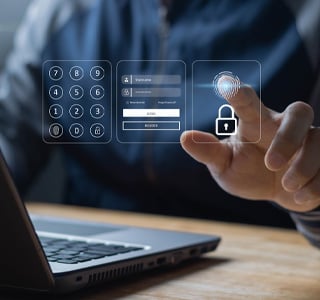-
Compliance and audit reviews
From mandates, best practice procedures or accreditations, to simply gaining peace of mind, our technical and industry experts have you covered.
-
External audit
Strengthen business and stakeholder confidence with professionally verified results and insights.
-
Financial reporting advisory
Deep expertise to help you navigate New Zealand’s constantly evolving regulatory environment.
-
Corporate tax
Identify tax issues, risks and opportunities in your organisation, and implement strategies to improve your bottom line.
-
Indirect tax
Stay on top of the indirect taxes that can impact your business at any given time.
-
Individual tax
Preparing today to help you invest in tomorrow.
-
Private business tax structuring
Find the best tax structure for your business.
-
Tax disputes
In a dispute with Inland Revenue or facing an audit? Don’t go it alone.
-
Research & development
R&D tax incentives are often underused and misunderstood – is your business maximising opportunities for making claims?
-
Management reporting
You’re doing well, but could you be doing even better? Discover the power of management reporting.
-
Financial reporting advisory
Deep expertise to help you navigate New Zealand’s constantly evolving regulatory environment.
-
Succession planning
When it comes to a business strategy that’s as important as succession planning, you can’t afford to leave things to chance.
-
Trust management
Fresh perspectives, practical solutions and flexible support for trusts and estate planning.
-
Forecasting and budgeting
Prepare for every likely situation with robust budgeting and forecasting models.
-
Outsourced accounting services
An extension of your team when you need us, so you can focus your time, energy and passion on your business.
-
Setting up in New Zealand
Looking to set up a business in New Zealand? You’ve come to the right place.
-
Policy reviews & development
Turn your risks into strengths with tailored policies that protect, guide and empower your business.
-
Performance improvement
Every business has untapped potential. Unlock yours.
-
Programme & project management
Successfully execute mission-critical changes to your organisation.
-
Strategy
Make a choice about your vision and purpose, where you will play and how you will win – now and into the future.
-
Risk
Manage risks with confidence to support your strategy.
-
Cloud services
Leverage the cloud to keep your data safe, operate more efficiently, reduce costs and create a better experience for your employees and clients.
-
Data analytics
Use your data to make better business decisions.
-
IT assurance
Are your IT systems reliable, safe and compliant?
-
Cyber resilience
As the benefits technology can deliver to your business increases, so too do the opportunities for cybercriminals.
-
Virtual asset advisory
Helping you navigate the world of virtual currencies and decentralised financial systems.
-
Virtual CSO
Security leadership and expertise when you need it.
-
Debt advisory
Raise, refinance, restructure or manage debt to achieve the optimal funding structure for your organisation.
-
Financial modelling
Understand the impact of your decisions before you make them.
-
Raising finance
Access the best source of funding for your business with a sound business strategy and rigorous planning.
-
Business valuations
Valuable decisions require valued insights.
-
Complex and international services
Navigate the complexities of multi-jurisdictional insolvencies.
-
Corporate insolvency
Achieve fair and orderly outcomes if your business – or part of it - is facing insolvency.
-
Independent business review
Is your business viable today? Will it be viable tomorrow? Give your business a health check to find out.
-
Litigation support
Straight forward advice from trusted advisors to support litigation and arbitration matters, expert determinations and other specialist hearings.
-
Business valuations
Valuable decisions require valued insights.
-
Forensic accounting & dispute advisory
Understand the true values, numbers and dollars at stake, as well as your obligations and rights to ensure value is preserved and complexities are managed.
-
Expert witness
Our expert witnesses analyse, interpret, summarise and present complex financial and business-related issues which are understandable and properly supported.
-
Investigation services
A fast and customised response when misconduct occurs in your business.

E-invoicing has been around for a while, Peppol is taking it to the next level.
Despite being around for a few years now, surprisingly few Kiwi companies have embraced e-invoicing; only around 21,000 out of over 700,000 registered businesses have signed up to Peppol. Most companies either don’t know about it, or don’t realise how easy it is to implement.
One of the best ways to implement e-invoicing is via a platform called Peppol, an internationally recognised system designed to make invoicing more secure. It lets accounting platforms send invoices directly within their systems, and the benefits are enormous. Our government supports this platform and is a registered Peppol authority. According to MBIE there are currently 32 countries signed up – and counting (for New Zealand businesses, the system currently only works nationally). The more companies that embrace Peppol, the more we can tackle cyber fraud.
Lawyers and tradies commonly targeted
Invoice scams are widespread and have struck many Kiwi businesses. Perhaps the most famous victim was Team NZ, which lost $2.8 million to Hungarian fraudsters during the last America’s Cup campaign.
The organisation was paying for media production services for the race, which is just the kind of large one-off transaction cyber criminals seek out. When you’re making a one-off payment, you’re less likely to have the right bank account already loaded into your system. Scammers often go after tradies and lawyers, for example, because both send out large, irregular invoices.
By accessing a company’s email accounts, scammers can change the account number and amount, but the invoice still arrives from a trusted address with the usual format. This can make it extremely hard to spot the fraud. Initial invoices are a point of vulnerability, where the account number is entered manually from the invoice.
Both businesses and individuals are hit hard by these frauds. The invoice sender hasn’t received their money, but the client insists it’s been paid. Ultimately, the client who thought they’d sent the money is now on the hook for another complete payment.
For example, an interior design business – let’s call them Timothy Designs - paid $200,000 to a contractor assisting with an office fit-out. Unfortunately, the invoice had been intercepted by fraudsters; the email told Timothy to please note the new bank account number, so Timothy unknowingly paid the money to a scammer. When he realised what had happened, he contacted the bank, but the payment could not be reversed. The Banking Ombudsman found the bank was not to blame, and Timothy Designs was left to find another $200,000 – presumably causing plenty of headaches for the contractor, too. If Peppol had been used by both businesses, it’s highly likely this could have been avoided.
E-invoicing not only decreases the risk of fraud, it can save you time and money too
Many large businesses now have a policy of calling first-time suppliers to verbally double-check account numbers before they are entered into their system. And although this is good practice, we still recommend using Peppol to further reduce the risk of emails being intercepted by fraudsters.
Peppol sends your bills directly from your accounting system to your client’s system, without ever going through your inbox. As invoices never leave the security of the sender’s and recipient’s accounting platforms, it is considered the one of the most secure methods to send invoices.
Even if you think your business is at low risk of being scammed, the other financial benefits of Peppol are well worth adopting it. It reduces your administration time and costs, which means there are fewer ways to introduce human error, and clients can no longer claim they never received your email, or the invoice is ‘lost in the system’.
MBIE has created a benefits calculator which lets you plug in your details to see the cost savings. It estimates that a company sending out 10,000 manually created paper or PDF invoices will save over $7,000 in the first year, with savings accumulating to reach over $200,000 by year five as uptake grows.
It only takes five minutes to set up in your accounting platform
Using Peppol is straightforward.
All the big accounting platforms are involved, including Xero, MYOB, Workday and many other software options – even some internal proprietary systems are included. If both parties are signed up, the systems can exchange invoices, without any emails required.
Many large businesses have adopted this technology, including Woolworths NZ and Westpac. Central Government agencies are also on board, and many have pledged to pay invoices that are under $1mil within 10 days if received by e-invoice via Peppol – the cashflow boost alone is reason enough to use e-invoicing if you’re a government supplier.
It’s a five-minute job to enable Peppol in your accounting platform. A quick search will show you where to start, then you add your details and your New Zealand Business Number (NZBN). Now you have the option to send invoices from your accounting software directly to your clients’ systems, provided they have also enabled Peppol.
A step into the future for Kiwi businesses
Every business in New Zealand should be signed up for Peppol. It will help Aotearoa bring our invoicing up to a modern international standard, because we’re currently lagging behind the world stage. MBIE estimates Peppol could save $4.4 billion over 10 years, considering that we send more than 280 million business-to-business emails annually.
Plus, while Peppol is entirely optional now, it may become mandatory for certain types of transactions. In the meantime, all businesses should consider using Peppol as soon as they can, because there’s simply no downside. Instead, it reduces your fraud exposure, cuts your admin time and saves you money – what are you waiting for?







